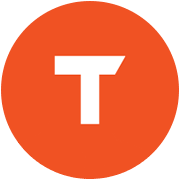
In 2025, the retailers who will be most successful won't be the ones with the largest discounts or most promotions; they'll be the ones using data to outsmart their competition.
As the consumer landscape changes and margins get tighter, Trade promotion optimization (TPO) has quickly become a strategic necessity for CPG and retail companies. Traditional trade promotion management (TPM) only manages the past, as it's focused on tracking spend, while TPO can manage outcomes for the future. TPM is simply not enough. TPO uses data, AI, predictive analytics, and real-time insights to enable a much different model of fine-tuning every promotion based on what works across channels, regions, and categories.
In this article, we'll cover everything you need to understand why TPO is changing the way it feels success in CPG and retail, what the differences between TPM and TPO are, and what you need to build a TPO strategy that wins in 2025 and beyond.
What Is Trade Promotion Optimization?
TPO is leveraging AI, predictive analytics, and integrated data to develop, execute, and continually optimize. It goes beyond traditional TPM, merely tracking activities and spend, TPO can also answer strategic questions such as:
- Which promotions will drive the highest incremental lift?
- When and where to run them?
- What discount depth will give the best ROI, while not cannibalizing other SKUs?
In a PwC analysis, it was found that maximizing planning and execution can enhance bottom-line operating performance by 10–15%. This is not a hypothetical impact - it is real, measurable, and happening now for brands leveraging data-enabled decisions.
Trade promotion optimization software is more than just performance tracking; it allows brands to pre-emptively forecast outcomes before promotions go live, with the ability to:
- Analyze historical and POS data
- Simulate multiple promotion scenarios across regions and channels
- Forecast in real-time sales lift, margin, and ROI impact from promotions
- Continuously improve strategies from actual performance data
While TPM focuses on "what happened," TPO focuses on "what should happen" and, more importantly, how to do it better.
Trade Promotion Optimization vs. Trade Promotion Management: What is the Difference?
Trade optimization and Trade Promotion Management (TPM) are often confused by retail and CPG executives, but they are two very different things. Why is it important to understand the distinction? Because modernizing your promotional strategy to drive measurable ROI begins with understanding the difference.
|
Feature |
Trade Promotion Management (TPM) |
Trade Promotion Optimization (TPO) |
|
Main Objective |
Administer and operate trade promotion processes |
Increase the impact and ROI of trade promotions |
|
Core Focus |
Operational tasks: budget, approval, execution/ref, results tracking |
Strategic planning: fiscal planning, simulations and-strategic planning, and modality improvement or incremental performance. |
|
Planning Methodology |
Historically-based, experience-based, or prior-year calendars |
Data-based and predictive through simulation and/or AI |
|
Technology Stack |
ERP system, spreadsheets, or "legacy" TPM tools |
Advanced internal analytics, AI/ML models, and built simulation engines |
|
Data Usage |
Transactional, post-promotion data (e.g., claims, deductions) |
Integrated data from POS, loyalty, inventory, syndicated sources, and real-time inputs |
|
Insights Provided |
Historical performance tracking, but generally no granularity |
Historical, real-time insights, predictive lift estimates, ROI simulation, and optimization guidance |
|
Decision Support |
Human, relying on gut feel, anecdotal feedback, or simple reports |
Automated suggestions driven by predictive models and scenario testing |
|
Scalability |
Often department-specific, with very little cross-functional alignment |
Enterprise-level strategy connecting marketing, sales, the finance department, and the supply chain |
|
Impact on Profitability |
Limited; tracks expenditures but doesn't guarantee effectiveness |
Direct; reallocates spending to high-performing promotions and reduces waste, while enhancing margins |
|
End Goal |
Full promotion execution lifecycle with audit trail |
Ongoing enhancement of strategy on trade spend to ensure brand and financial health over time |
While TPM gives you a format, it rarely gives you an answer to the more meaningful question: Which promotions worked and why? This is our reason for needing Trade promotion optimization.
Building Blocks of an Effective Trade Optimization Model
TPO is a framework created from smart systems, good data, and continual iteration. To help the flexibility and AI scalability of your TPO efforts, it is necessary to understand the key blocks that will allow your model to be truly effective.
Below are the five key building blocks in a good TPO framework.
1. Data Integration
Any optimization model is only as good as the data it processes. For trade promotion optimization model, this means combining data from different sources using both internal and external data capabilities like POS systems, loyalty programs, syndicated market data (i.e,. Nielsen or IRI,) and inventory records. Data integration creates a single source of truth, integrating promotional activity with consequences.
When data is piecemealed together, we end up making fragmented decisions. With an integrated data pipeline, businesses have visibility from the shelf to the shopper, and an integrated view is important for recognizing trends, anomalies, and building a predictive model in line with real-life behavior.
2. Predictive Analysis
Predictive analytics uses historical data to predict the likely outcomes for future promotions. Rather than guessing about how a 15% discount will perform in Q3, the analyst runs scenarios based on seasonality, previous campaign metrics, the well-being of the product category, and other macroeconomic indicators.
This helps sales/marketing teams create promotions that have real validity based on marketplace scenarios in each region, channel and customer segment. When brands understand proactively what will (or won't) work, they can reduce undesired spending and focus on higher-impact strategies that lead to measurable lift.
3. Promotion Strategy Simulation
Promotion strategy simulation is where Trade promotion optimization really gets powerful. Here, brands can simulate "what-if if scenarios in a risk-free, virtually safe laboratory. Want to see what happens if you bundle products and sell in Tier 2 cities? The simulation model provides that answer and others in seconds.
This enables CPG teams to help pressure-test multiple strategies before they ever go live. The benefit arises in fewer campaign failures, better allocation of trade investments, and better collaborative performance across marketing, sales, and supply chain functions.
4. Promotional Decisions from AI Agent(s)
This is where TPO is at the point of moving from intelligent analysis to intelligent action. The TPO system has AI agents that can recommend autonomously on promotion calendars, optimal discount levels, and in-store execution strategies that are based on the market today, in real time. These agents learn over time and, with each promotional cycle, refine their recommendations.
Tredence and a Fortune 500 CPG brand partnered to enhance visibility and optimization of trade promotion spend in emerging markets. The brand utilized a machine learning-based platform that uses SKU-level ROI forecasting and a real-time promotion simulator to evaluate the revenue generated by multiple potential execution scenarios. The result was a profit increase of $1.5 million through net sales increases, and a savings of $34,000 a year by no longer requiring the legacy system, proving the potential of AI projectable Trade promotion optimization for both scalability and cost-effectiveness in one project.
5. Learning Loops and Continuous Learning
trade promotion optimization model isn't a defined process; it is a living model that gets better and smarter with every promotion. Continuous learning loops will enable TPO developers to take the actual promotion outcome, compare it to the predicted outcome, and use this information to refine the engineer's model. This broadens the room for tolerances so the TPO system grows with shifts in the market, purchasing shopper behavior, and priorities within the business.
Without feedback mechanisms, companies will either continue to repeat past mistakes or be unaware of upcoming opportunities. A proper TPO platform should also be looking at important metrics like sales lift, cannibalization, and margin contribution, and adjusting its recommendation algorithms accordingly.
How Trade Promotion Optimization Can Enhance Your Overall Promotion Strategy
The optimization model is not simply a tactical improvement, but a strategic advantage. It allows retail and CPG brands to make better decisions, identify inefficiencies, and execute who can measure business impact through the whole promotion lifecycle.
Here are five major components that TPO turns your promotional strategy from reactive to higher performance:
1. Increase Incremental Sales Lift
TPO is about generating incremental sales as opposed to total sales volume. TPO identifies promotions that generate purchases that would not have occurred without the promotion in place, so that you can be confident your trade dollars are moving the needle.
The planning aspect of a TPO will simulate for you a variety of discount rates, time frames, and bundles based on history and recommend the promotion that is most likely to yield the most lift for the lowest cost. Thus, it will build on itself to create a compounding impact over time, allowing promotions to become more strategic, more targeted, and more profitable over time.
2. Increase Profit Margins and Minimize Excess Promotional Spending
Instead of solely relying on deep discounts or broad campaigns, TPO allows brands to optimize spend for margin. On an inverse basis, Trade promotion optimization identifies poor performing promotions, excessive discounting, and cannibalization of promotion rates, and suggests best practices.
One of the largest CPG brands in Latin America partnered with Tredence to move from manual, spreadsheet-driven planning to an AI/ML-powered TPO platform. This shift enabled accurate baseline modeling, scenario simulations, and smarter spend allocation. The result: $400M in trade budget optimized, $10M in incremental margin, and a 5.4-point ROI improvement across 1,100 SKUs in 13 countries, while significantly reducing waste and maximizing efficiency.
3. Enhance Forecast Accuracy and Planning
Many brands still rely on either backward-looking metrics or gut-driven forecasts when planning. With TPO, brands can eliminate the pain of guesswork and leverage historical, seasonality, shopper trends, and real-time signals to provide more accurate forecasts.
More accurate forecasting can lead to alignment of inventory, supply chains, and promotional calendars with actual demand. It results in fewer stockouts, less excess inventory, and greater confidence in execution across departments, particularly valuable for busy sales opportunities during holidays or product launches.
4. Allow for Omnichannel Strategy Alignment
TPO unites promotions across physical and digital touchpoints, including stores, apps, websites, and social touchpoints. It helps brands understand what's working where, while also allowing them to tailor their campaigns per channel, without the internal chaos and potential budget wars.
For example, a campaign may feature 10% off in-store, while simultaneously A/B testing a BOGO online. TPO will allow brands to track the effectiveness of each and then bring these learnings together as they go into the next promotion cycle. This results in a consistent brand experience that also should yield better results, channel by channel.
5. Prevent Product Cannibalization
TPO models simulate how promotions affect your entire portfolio of products, not just the item on promotion. This process will assist in avoiding cannibalization, which can occur when sales of one SKU are at the expense of another SKU.
By accounting for portfolio interactions, you’re able to develop promotions to maximize net sales of volume without disrupting or shifting available volume - protecting overall category health and strategic brand balance.
KPIs for Assessing the Effectiveness of TPO
Using the right KPIs allows us to accurately assess the effectiveness, highlight areas for improvement, and support the business case for scaling. Here are five essential KPIs to measure Trade promotion optimization performance for CPG or retail businesses:
1. Incremental Sales Lift
This is the true measure of TPO success. Incremental lift measures how much additional sales you had because of the promotion, over and above what you would’ve sold without it. A great lift means buyers changed their behavior in response to your promotion, not just pulled homing demand.
TPO platforms will use baseline sales models and counter-factual analytics to isolate this lift. The more you track incremental lift over time, the more you will be able to anticipate what types of offers, geographies, and time windows create the most true value.
2. Promotional Spend ROI
Return on investment (ROI) for promotions tells you what value you are getting per dollar of promotional spend. Unlike total sales and revenue, AI agent-driven promotional decisions are all about efficiency and it's a critical number when your trade budget is constrained.
By benchmarking your promotional outcomes to costs (net of discounts, execution, and fees), you immediately identify low-ROI programs and also shift good outcomes around dollars to create the best pathways forward. Most brands leverage predictive trade promotion analysis to evaluate their promotional ROI performance and see solid double-digit improvements over the years.
3. Forecast Accuracy
Accurate forecasts of demand minimize waste, maximize customer satisfaction, and reduce stockouts. Trade promotion optimization not only produces predictive models, but it also produces predictive models that continue to learn and evolve. This is especially helpful when planning a promotion that needs to be realistic and profitable.
There are a variety of ways to measure forecast accuracy, one of which is to assess the expected vs actual sales performance during a promotion. Suppose the associated key performance indicator (KPI) is increasing steadily over time; in that case, it is an indicator that the respective forecast model continues to improve in both reliability and adaptability.
4. Cannibalization Rate
Not every lift in sales is a good lift, in particular if the lift represents lost sales of your products. The cannibalization rate is designed to measure how many of your promotion-based sales merely replace sales of other SKUs in your portfolio.
Cannibalization rate should be high or low, but rather function as a ratio to tell you what percentage of total product sales are derived from promotion and do not displace sales of other products. Furthermore, high cannibalization means your promotion is simply destroying value, while Trade promotion optimization can operate by simulating what could happen to all products if the promotion occurs and adjusting the promotion accordingly before its execution to increase net benefit.
5. Execution Compliance
No matter how well executed the promotion is, a well-designed promotion can fail when promotions are not executed consistently. Execution compliance measures how consistently promotions are executed across stores, channels, and geographies, as intended.
By harnessing store-level data and digital shelf monitoring, TPO platforms can identify execution compliance issues and attribute performance impact to market execution. Execution compliance can create a more reliable campaign by ensuring that the insights you are capturing are based on clean, accurate performance.
Challenges When Adopting a Trade Promotion Optimization Solution
Although TPO has benefits, it's not easy to get there, and many organizations face antiquated processes, poor data infrastructure, and resistance, leading to stalled or abandoned initiatives.
The following describes the major challenges brands face with TPO adoption and how they can be solved:
1. Issues With Data Availability and Quality
TPO relies on clean, connected data; however, many organizations are still using fragmented data sources, where sales data, POS data, and inventory data are stored in silos. This fragmentation results in blind spots which ultimately compound problem issues with poorly and ineffec- tive promotion models produced by the TPO system.
This is a well-recognized problem: according to a Salesforce report, 81% of IT leaders say data silos are an obstacle to their digital transformation journeys. Data is the foundation of your model, report, or ramification, and without sound data integration, even the best TPO tools cannot provide a reliable forecast or actionable recommendations. So, the first critical step in finding a successful solution is data integration.
2. Team Changes Involving Resistance to Change
TPO will discourage existing behaviors for sales and marketing teams that have traditionally planned based on instinct or experience, and introducing agentic AI and machine learning will likely elicit skepticism and resistance.
The process to encourage available change is change management. Involve your cross-functional stakeholders early, educate teams on the rationale behind TPO, and conduct pilots to show your stakeholders some quick wins. Typically, when people see better forecasts and smarter decisions as a result of Trade promotion optimization , the resistance subsides.
3. Interfacing with Existing TPM Systems
Trade Promotion Management tools are already being used by most consumer packaged goods (CPG) companies, but such tools typically lack advanced prediction capabilities and, therefore, the ability to optimize promotions. Connecting TPO to these systems can seem cumbersome and expensive.
The answer is not a did-it-all replacement. Leading trade optimization, systems are designed to plug into TPM workflows, while adding insight to the trade investment data through artificial intelligence. The right technology and AI consulting partner can provide the right fusion capabilities, while adding value and not disrupting the high-value core.
4. The Need for Cross-Functional Assessment
TPO involves multiple teams, including marketing, sales, finance and accounting, supply chain, and analytics. If these teams do not have a common goal or if they do not communicate with a common data language, then the Trade promotion optimization strategy will fall apart before it even starts.
Organizations that are successful in TPO build cross-functional centers of excellence (COEs) or agile squads that co-own the outcome. This allows for aligned ownership of goals, transition to implementation, and associated good practice.
5. Misaligned Expectations and Lack of Readiness for Transformation
According to the Harvard Business Review, “70% of digital transformation projects fail due to lack of data quality and organizational misalignment.” TPO, like any other transformative effort, requires proper timelines for implementation, resource planning, and buy-in and alignment from executive leadership.
Establish a phased roadmap using a pilot; establish the pilot in one category or region, validate the results, and scale step-by-step. Don’t have the mindset that you want to improve everything, everywhere, all at once. Success for TPO is cumulative and iterative.
Conclusion
Trade promotions are no longer merely tactical levers; they have become strategic drivers of growth. In 2025 and beyond, brands that use data, AI, and predictive insights to plan trade promotions will continue to outperform others using legacy planning processes or gut instincts.
Understanding the value of artificial intelligence solutions in your business is essential to navigating this shift. It’s not just about adopting a tool—it's about transforming how your teams plan, execute, and evaluate promotions at scale. From AI automation and scalability to predictive accuracy and real-time agility, TPO empowers you to spend smarter, drive ROI, and align execution across every channel.
At Tredence, we help leading brands roll out AI-driven trade promotion optimization solutions that convert promotional madness into decision intelligence. We provide full implementation support from start to finish, from pilots to enterprise-wide rollout. Our experts are here to help in your journey to go AI-powered.
Are you ready to revolutionize your trade strategy? Contact us to explore our services today!
FAQs
1. What is the first step in a trade promotion optimization project?
The first step is a data audit, whereby everyone audits the quality, accessibility, and consistency of all promotional, sales, and inventory data. This data is the basis for how useful (or useless!!) your TPO model will be. Early identification of integration gaps will be advantageous moving forward.
2. How long will it take to realize the results of a TPO?
Most brands realize measurable results from a TPO pilot within 3-6 months. The total impact - lift in ROI and operational effectiveness is usually felt after a 9-12 month period; the length of time will depend on the complexity of the implementation.
3. Will implementing a trade optimization solution require replacing existing TPM systems?
No, most current TPO platforms are designed to work within current TPM systems and do not require replacement. TPO systems engage with existing TPM workstreams and enhance assistance with AI insights, guidance, and automation without having to redeploy the entire system.
4. Are small or mid-sized CPG brands able to take advantage of TPO?
Absolutely. TPO is not just for the big enterprises. Smaller brands tend to take even more value from TPO as they are usually working with limited trade budgets, so TPO and maximize that budget and minimize waste, and give them a better shot at competing with larger operators by being smarter about their execution.
5. What promotions can TPO optimize?
TPO can optimize a wide range of promotions from in-store discounts and endcap promotions to digital coupons and loyalty offers, and bundled deals. The platform can assess performance across different promotions and recommend a smart mix of the combination that would be most profitable for the brand, by leveraging real-time and historical performance data.

AUTHOR - FOLLOW
Editorial Team
Tredence
Next Topic
Human-in-the-Loop (HITL) in AI/ML: Smarter Intelligence in the AI or Human Era
Next Topic




